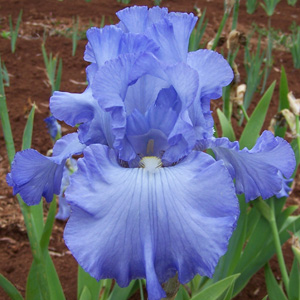Bearded Iris Growing Guide

What is Bearded Iris?
Bearded Iris (Iris x germanica) also known as Rainbow Iris or Flag Iris is an evergreen perennial rhizome. It comes from the Iridaceae family and originated in southern and central Europe. Bearded iris comes in a tall and a dwarf varieties with many hybrid so you wont be short on colour choice when looking at their spectacular flowers. Their flowers are arranged on a spike blooming in late Spring. Bearded Iris have attractive bluey green flat, sword-like foliage that fan out in a clumping manner. They require a full sun position in your garden that is protected from strong winds and frosts. Sunshine and good drainage is the most important thing for the plants to produce good flowers. Clumps can be divided to keep the clumps fresh or to plant more around your garden.
Benefits of Growing Bearded Iris
The Bearded Iris is ideal for tall accents in the garden bed and is one of the most elegant and easy to grow flowers of Summer. They are very hardy plants and most worthwhile in the garden because, with very little care they’ll provide you with many flowers each year. Bearded Iris are extremely hardy and make a wonderful display in many Australians gardens. They also make wonderful cut flowers lasting for up to a week.
How to Grow Bearded Iris
Climatic Zones
Cool to sub-tropical.
Plant Size
Dwarf Height: 40-60cm, Width: 20cm
Tall Height: 1m, Width: 30cm
When To Plant Bearded Iris
Plant in Summer to Autumn
Soil Preparation
Well drained soil. Bearded Iris take lots of nutrients out of the soil so adding lots of old organic matter under the rhizome at planting time will improve the soil quality and drainage.
How To Plant Bearded Iris
Plant in full sun, 20-40cm apart wider for taller varieties. Roots into the soil, top of the rhizome just above soil surface.
Bearded Iris Plant Care
Bearded iris are drought tolerant plants and don’t require a lot of water. Water during Summer when they don’t get acquitted rainfall. They will rot if over watered.
Fertilising isn’t really required, but a light application of low nitrogen fertiliser can be applied in Autumn and Spring.
Remove spent flowers stems and old leaves when they turn brown. When removing leaves give a tug on the leaf and it should come away from the plant easily.Insects can attack, control with insecticide as required.
The rhizome will rot if buried too deep, over watered or mulched too close.
The best time to divide and replant bearded irises is late Summer or after they have completed flowering. Using a garden fork to dig out the rhizomes. It should be easy to dig up as the feeder roots and rhizomes are shallow. Using your hands pull apart the rhizomes to divide them. You may need to use a knife to cut off baby rhizomes. Only use the rhizomes that have buds and roots attached to replant and throw out the dead rhizomes. Before replanting the rhizome cut the foliage in half this will help the plant focus on growing roots during Winter.
Recommended Bearded Iris Varieties
Bearded irises are among the most elegant and colorful perennials you can grow. They suit most garden styles and you are never short on colour choice.

Bearded Iris Syncopation
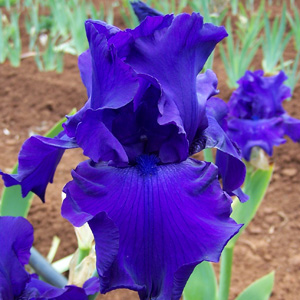
Bearded Iris Titans Glory

Bearded Iris Superstition
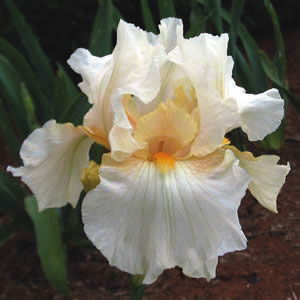
Bearded Iris Crystal Glitters
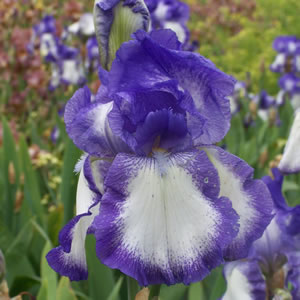
Bearded Iris Babbling Brook
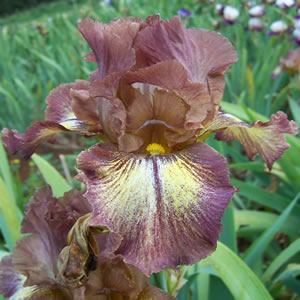
Bearded Iris Kerries Kirtle

